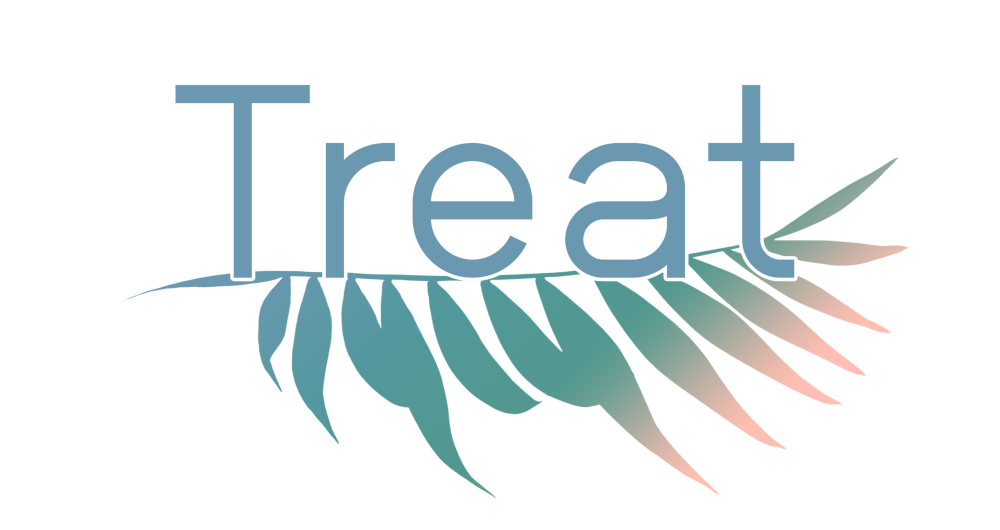My First Experience of Cupping
By Penny Driscoll
I’ve been visiting Treat’s founder and acupuncturist, Rebecca Geanty for many years now. It all began when I was pregnant ten years ago. I remember those pregnancy sessions vividly because they were my little piece of ‘calm’ each week. Rebecca also helped me with induction acupuncture, and around the same time, she also taught my partner a range of acupressure points to support the birth.
Fast-forward, several years, and I started seeing Rebecca more regularly for knee pain (osteoarthritis). Acupuncture for my knees has been a godsend in terms of pain relief. After each session I always notice how much lighter and more supple my knees are – it really makes a difference for me.
However, recently I’ve been told I have an autoimmune condition, which is still being investigated. What I do know is that on top of fatigue, I’m also experiencing a lot of joint pain. Part of this includes a condition with the tissue in my shoulders. Recently, Rebecca suggested trying cupping in addition to acupuncture, and I thought, why not.
So What is Cupping
Cupping is an ancient healing approach that has the potential to ease pain. It has been popular in Chinese, Egyptian and Middle Eastern cultures for thousands of years. Little glass containers, a little like bubble-shaped drinking glasses are used, and these cups use suction to pull on your skin and draw blood to any given area of pain. These little cups use the suction of your skin to stay attached to your skin for a few moment. The goal? To improve the blood flow and circulation to any given area of the body.
How Does Cupping Feel
Often cupping is applied on the back and shoulders or any part of the body where there is enough flesh for the cup to attach to. During my session, Rebecca chatted me through the approach and how it works. I then lay on my front, and Rebecca did a really lovely massage, using the cups edges as part of the treatment.
She used body oil and to be honest the first part of the treatment felt very similar to a regular massage. It was really relaxing (I could have stayed on the bed al day!) Then, she gradually cupped different parts of my upper back with around 4-6 cups in total. It didn’t feel painful and there wasn’t any discomfort, it was just a mild tightness which was temporary, and after less than a minute, I forgot the cups were even there.
Because the cup sucks up air, part of the skin is raised, like a suction, and this is what keeps the glass cup in place and attached to the skin. The cups are then left in place for around 10 minutes of so, though the length of time may vary from person-to-person and their condition.
‘Red Carpet’ Cupping Marks
Sometimes, multiple circular discolorations can feature on the skin afterwards. Cupping sends fluid into the area, and as a result, sometimes you might be left with a slight discoloration of the skin. These marks are not bruises, but rather signs that the therapy is working to bring fresh circulation to areas of stagnation in the body.
The colour and intensity of the marks can vary from person to person, depending on how much stagnation is present, and they usually fade within a few days. Many patients even notice that the more frequently they receive cupping, the lighter the marks become, indicating improved circulation and balance over time. But, for me, I found I didn’t really have any markings, just one very faint circle which went within 24 hours.
Speaking of markings, during my session, Rebecca was telling me how cupping has gained popularity in recent years after Gwyneth Paltrow attended a red carpet ceremony with her ‘cupping marks’ on show underneath her dress - she wore them like a badge, and since then the general public seemed to take a bigger interest in cupping.
In short, the session was super relaxing – just like a massage – and the cups were applied and I was left for a few moments to marinate. After this time, I then had the cups removed and some acupuncture needles applied to support the cupping treatment.
It is possible to feel a little light-headed after a cupping and acupuncture session, so just make sure you move slowly off the massage table, and have a drink of water, slowly making your way back into the world and the rest of your day.
What is Cupping Good For?
Today, cupping is still very popular in China and also many other European countries, too. Cupping is used for respiratory conditions such as asthma, bronchitis, congestion, muscle pain, tension, head aches and migraines, anxiety and stress-related issues. It can also be a helpful stand-alone treatment or one used in conjunction with acupuncture for things like arthritis, gastrointestinal disorders, depression and to reduce swelling. In short, cupping can be good for helping to move blockages in the body so you feel a release.
Try Cupping…
A cupping session lasts around 75 minutes, including the consultation. During this same session you can have a combination of cupping and acupuncture or simply just opt for a cupping treatment. It costs just £38 for a Multi-Bed Session at Treat.
A ‘Multi-Bed’ is a room where other partitioned treatment beds are present and there may be another person receiving treatment at the same time as you. The room is private and you have your own curtain and attending the Multi Bed is a more cost-effective option than a one-to-one session. You can book here.
NB: Please note, client name has been changed to protect privacy.
To book an appointment:


